|
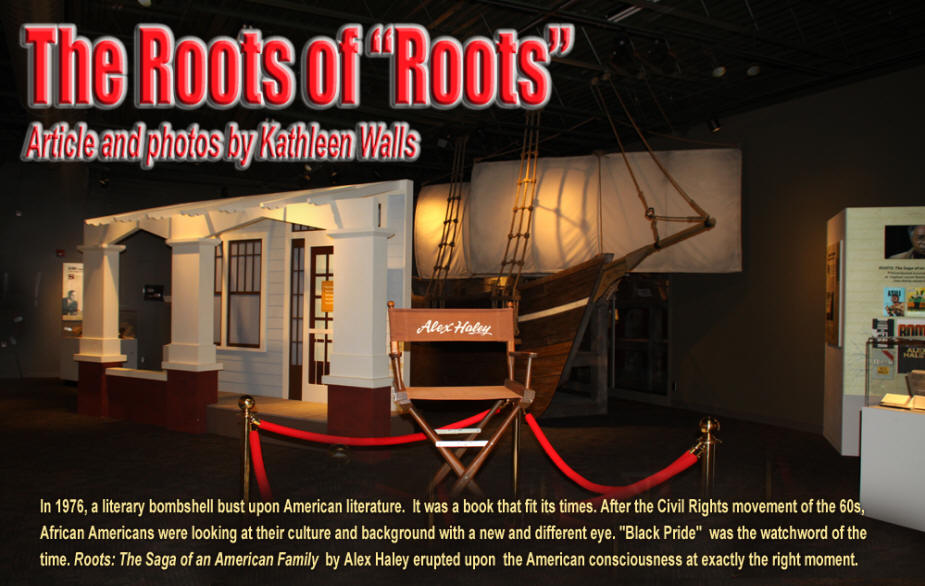 class="auto-The book was
rapidly followed by a television mini-series that garnered nine
Emmys,
a
Golden Globe and a Peabody Award. The series finale held the
record as the third-highest-rated US television program as of
2009. African Americans realized they had a proud heritage and
traced their own roots. Whites who had rarely given a thought to
the plight of Black people and what they suffered as a race
under slavery had a deeper understanding of the situation. class="auto-The book was
rapidly followed by a television mini-series that garnered nine
Emmys,
a
Golden Globe and a Peabody Award. The series finale held the
record as the third-highest-rated US television program as of
2009. African Americans realized they had a proud heritage and
traced their own roots. Whites who had rarely given a thought to
the plight of Black people and what they suffered as a race
under slavery had a deeper understanding of the situation.
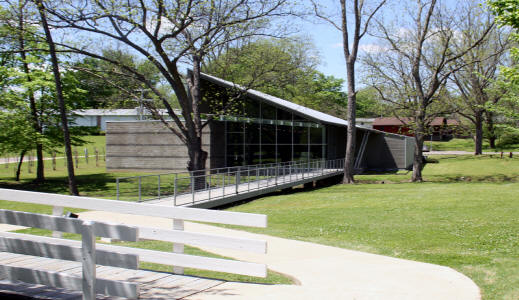 |
| The Alex Haley Museum and Interpretive Center |
Almost
every adult in the United States has either read the book or
seen the mini-series. In case you recently arrived from another
planet or were too young to read or watch TV back in 1979, the
story revolves around Kunta Kinte, a young African boy who is
captured and sold into slavery. The story tells of his plight
and followers him and
his
descendants right down to Alex himself.
Both the book and the mini-series,
which followed the book's story line very well, offer a wealth
of understanding of the customs and beliefsyoung Kunta Kinte brought with
him from his home in West Africa and the culture that evolved
when Africans from very different cultures were thrown together
in the cauldron of slavery and were forced to forge a common
ethnicity, African American. If you are one of these not
familiar with Roots, I suggest you head for the library, bookstore, Netflix or equivalent and make an
acquaintance with Kunta Kinte and his family.
 |
| Alex Haley's grandparents home |
My next suggestion evolves a bit of
travel-after all, this is a travel ezine. Head for the little
town of Henning, Tennessee and visit the place where Roots, the
book, first took root in the fertile soil of a young boy's mind,
The Alex Haley Museum and Interpretive Center, operating under
the jurisdiction of the Tennessee Historical Commission.
The heart of
this piece of literary history is Alex Haley's boyhood home.
Actually the home of his maternal grandparents, William and Cynthia Palmer.
It is the only
museum dedicated to a single African American. It's also a
museum with an international flair.
The international interest is because
Roots has been
translated into 37 different languages inspiring visitors from
around the world. Paula Boger, museum executive director, told
us, "We get visitors from all over
the world. Just last week, we had five visitors from England.
They were here because they are fans of Alex Haley and if
visitors can find us in this little place coming from England
and Germany and Australia, I always challenge our local people
to find us."
 |
| A picture of Alex Haley as a
baby in the home's music room |
For those who like Alex Haley are
trying to search for their own roots, the museum offers a free
genealogy sessions several Saturdays a month. Director Boger is very
enthused about this function of the interpretive center. She
explained, "That's what Alex was all
about . Trying to inspire others to do the same thing he did and
go in search of their own family roots."
The interpretive center is inspiring in
the way it explains Alex's life and how he came to write
Roots.
There is a film that acquaints those
unfamiliar with Roots with the story. The place is a treasure trove for any reader
and even more so for those who write.
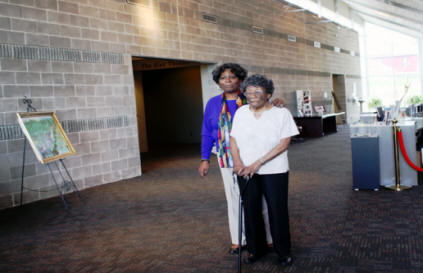 |
| Beverly and Magnolia in the
Interpretive Center |
One plaque is a statement by Alex
about sitting on the front porch and listening to his
grandmother and her friends, "people with names like Great Aunt
Liz, Great Aunt Jill, Great Aunt Penny and others. My
earliest memoriesare of these buddies who
would filter out to the front porch and take seats in the
cane-bottomed rocking chairs. They would begin rocking back and forth.
When they all got going it was like so many metatrons….and they
would talk each evening about the self-same thing; a
long narrative history of the family. They would speak about
people, place and things. When they were talking about people
the farthest-back person they talked about was someone called
The African."
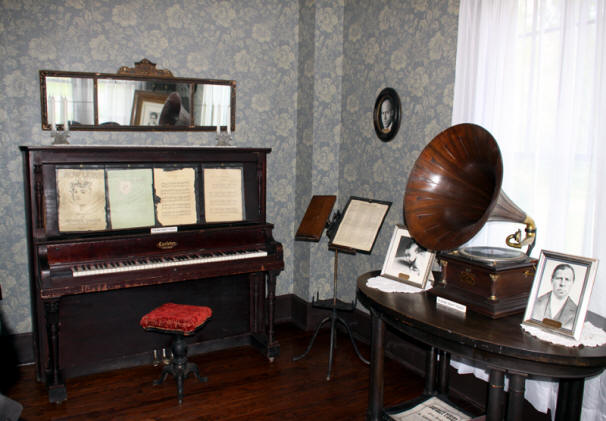 |
| The music room in the home |
By now I was itching to move on to
the house and see this fountain of inspiration.
Our guide, Beverly Johnson, is
also a descendant of Kinta Kunta (through Chicken George for
those who read the book). We were also privileged to meet
Beverly's mother, Magnolia, who was one of those who as a child
sat on that porch and listened to "the old ladies" talk of "the
African." What a thrill!
The house is
decorated as it was in the early 1900. Alex's grandfather died
in 1926 and his grandmother in 1949.
it was 1986 when Alex and his
brothers repurchased the home who then sold it to the state of
Tennessee. They tried to rearrange it based on Alex and he
brother's memories of the way the home was furnished.
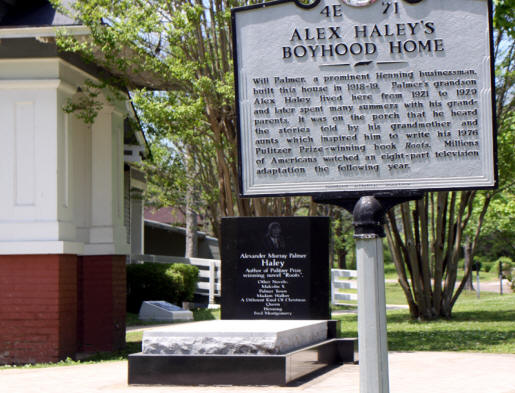 |
| Alex Haley's grave |
Alex's mother moved there shortly
after Alex was born while his father, Simon,worked on his graduate degree
in Ithaca, NY. After Simon finished his studies, he returned to
Henning. Alex's grandfather died when Alex was five and after
that, his father had to help run the Palmer Lumberyard. Even
after his father began teaching at different Southern Black
Colleges. he spend summers at his grandmother's.
As I strolled
though the home, listening to Beverly explain the reasons for
some of the furnishings, it was like looking into Alex's past. Seeing where one of the
greatest books of the 20th century first came to life in the
mind of a small boy.
Considering the impact this home had on
his life, it is only fitting that Alex chose to be buried on the
front lawn.
For more info:
http://www.alexhaleymuseum.org/
|
![]()
Ads fund American Roads so please consider them for your needed
purchases.
If you enjoy the articles we offer, donations
are always welcome.
|